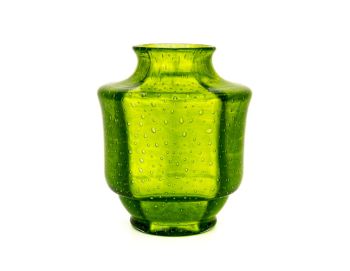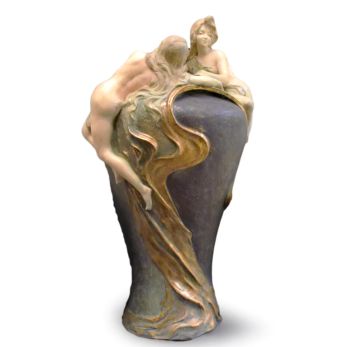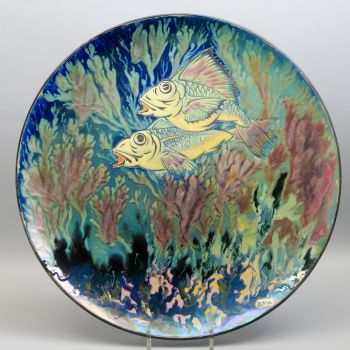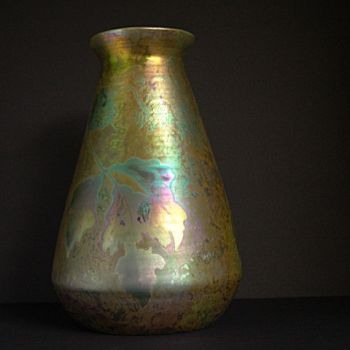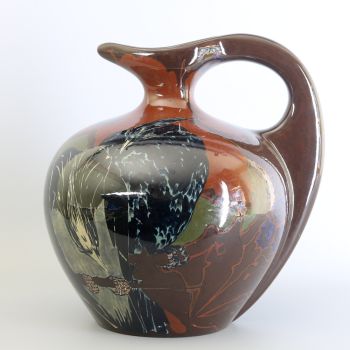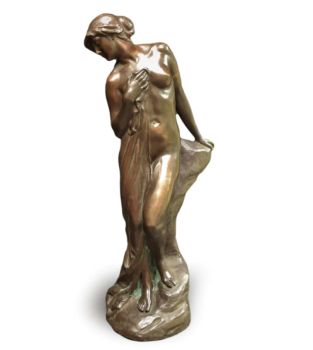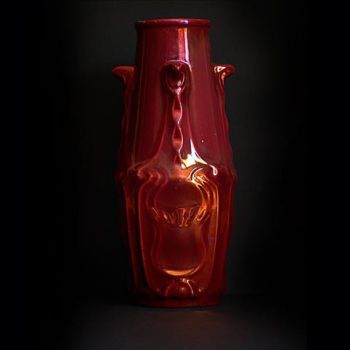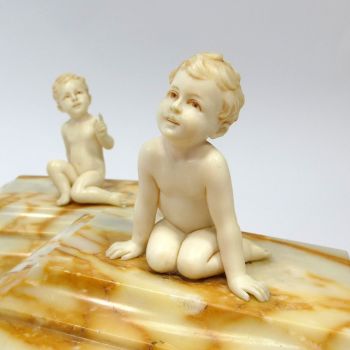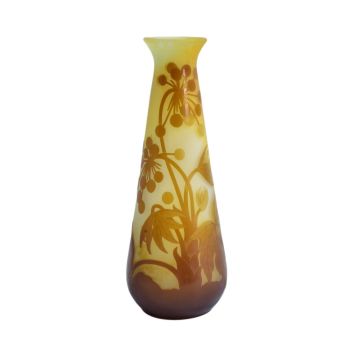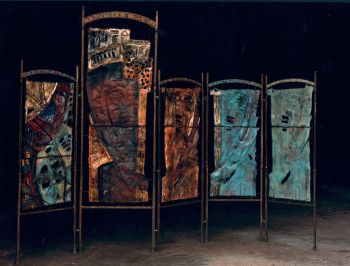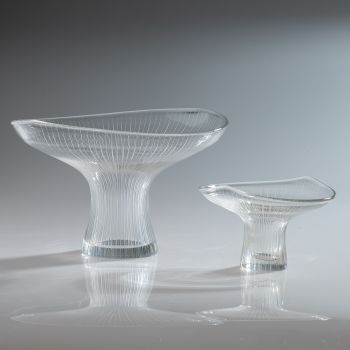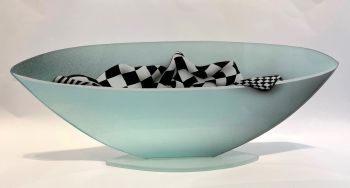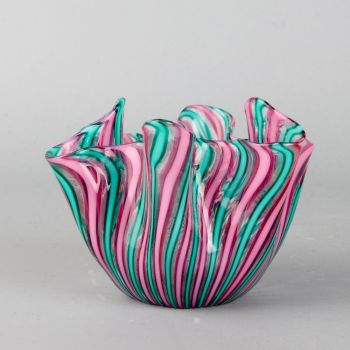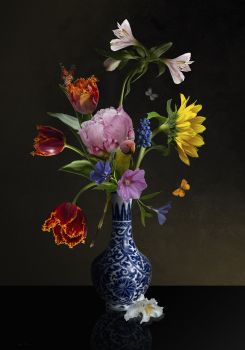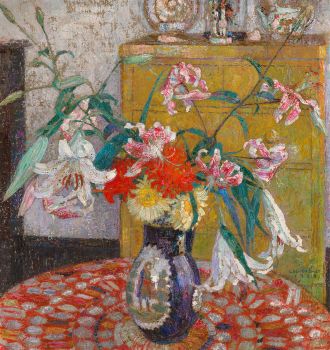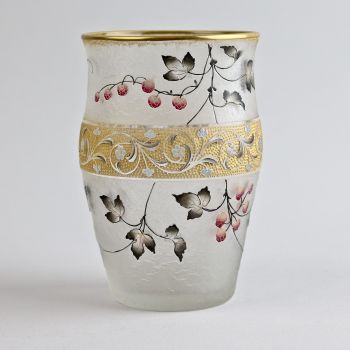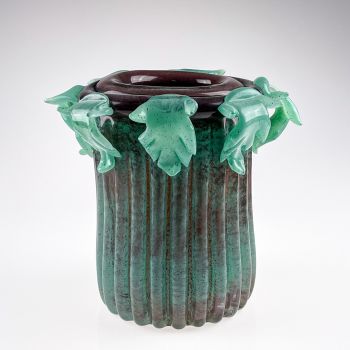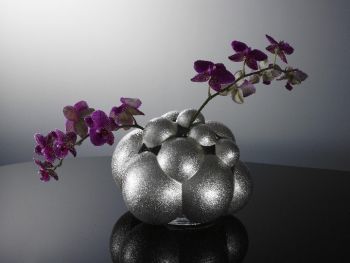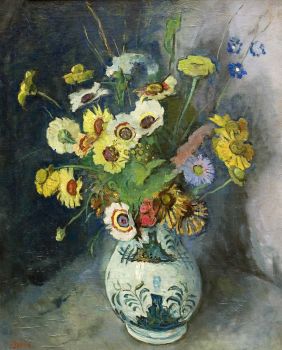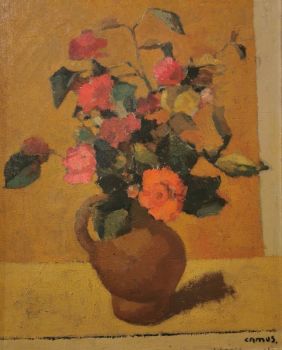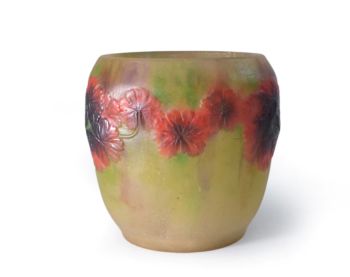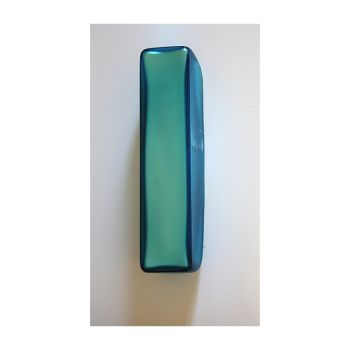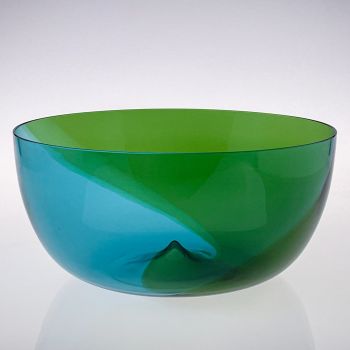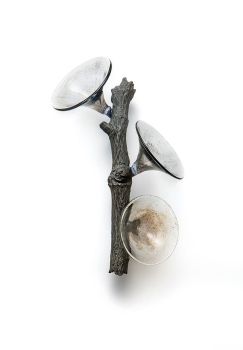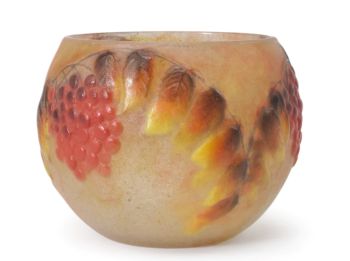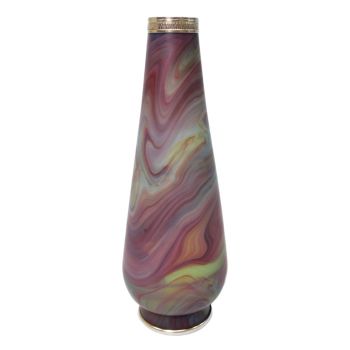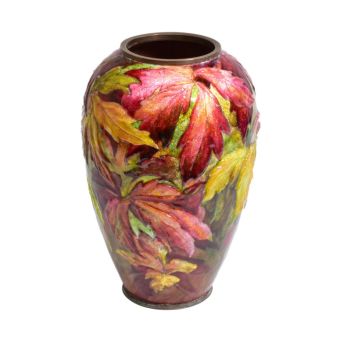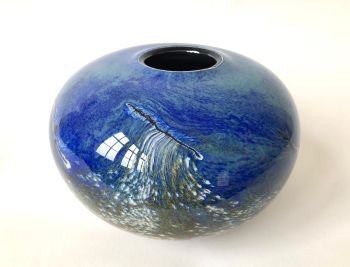Johann Loetz Witwe - Flamarion Titania bowl – Franz Hofstätter 1900 - 1910
Johann Loetz (Lötz) Witwe Klostermühle
Verre
8 cm, ø 10 cm
ConditionNear mint
Prix sur demande
Antiques Emporium
- Sur l'oeuvre d'artManufacturer: Johann Loetz Witwe
Decor: Flamarion
Style: Jugendstil
Material: Molded and free-formed glass, reduced, improved pontil
Color: Titania – blue with green flames
Period: 1900 – 1909
Description:
Franz Hofstätter’s work for Johann Loetz Witwe after 1900 is not entirely clear to this day. It occurs sporadically that a designer mentions his name on a design making attributions very difficult to trace. The reason of this could be that the produced glass was not immediately considered as very important art glass and therefor it was not needed to describe everything very detailed.
Our beautiful bowl is of the decor Flamarion and is a variation of the highly successful Titania genre that had been in production since 1905. Flamarion made its appearance in the year 1907 and can be attributed to the designer Franz Hofstätter. This attribution is substantiated by his name entry in the invoice book in the period 1908 – 1911 for the delivery of objects for the Exhibition “Österreichischer Kunstgewerbe” in Vienna 1911 / 1912.
The bowl is blown in light blue glass with silver titania glass threads in a crackle pattern with a decoration of drawn vertical green strips with silver titania threads in a flame pattern.
Literature:
Prestel – Böhmisch Glas 1880 – 1940 Band 1 Werkmonographie. Page 243.
Hatje Cantz – Lötz, Böhmisch Glas 1880 bis 1940. Page 88. - Sur l'artiste
La verrerie Loetz a existé à Klostermuhle, en Autriche, pendant un peu plus de cent ans, à partir de 1840. Mais son apogée a eu lieu du vivant de Max Ritter Von Spaun, petit-fils du premier Johann Loetz qui avait fondé l'entreprise.
Von Spaun a repris l'entreprise en 1879 et l'a dirigée jusqu'en 1908, un an avant sa mort. Il est assisté d'Eduard Prochaska, son spécialiste technique, et ensemble ils inventent, conçoivent et produisent toute une série de merveilleux nouveaux types de verre, en déposant plusieurs brevets et en remportant des prix dans toutes les grandes expositions mondiales des années 1890 et des premières années de le nouveau siècle.
La société Loetz figurait parmi les leaders du design Art Nouveau et en particulier du verre d'art irisé. Le verre "Papillon", comme le vase de gauche, est parfois appelé aujourd'hui verre "à tache d'huile". Une autre coloration préférée de Loetz était le verre irisé avec des traînées tirées appelé verre « Phenomenon ».
Il y avait des vases irisés avec des rubans de couleurs métalliques enroulés sur la surface, et de nombreux motifs spectaculaires avec des traînées appliquées de belles couleurs, ou simplement retirés du corps du verre pour former des poignées ou une décoration.
Vers 1900, la société a commencé à collaborer avec des designers extérieurs et de grands artistes ont conçu des pièces pour Lotz, notamment Joseph Hofmann, Koloman Moser, Maria Kirchner et Hofstatter.
En 1908, Loetz a été repris par le fils de Max Von Spaun, également appelé Max, et bien qu'il ait connu des difficultés financières (faillite en 1911 et à nouveau en 1931), il y avait plusieurs grands designers dont le travail a été produit par Loetz au cours de ces années et à travers l'art période déco. Ceux-ci comprenaient Adolf Beckert et Michael Powolny.
Êtes-vous intéressé par l'achat de cette oeuvre?
Artwork details
Related artworks
Johann Loetz (Lötz) Witwe Klostermühle
Johann Loetz Witwe - Phänomen Genre 7773 – Orange1900 - 1910
Prix sur demandeAntiques Emporium
Johann Loetz (Lötz) Witwe Klostermühle
Johann Loetz Witwe – Jugendstil Cobalt Papillon vaas1900 - 1910
Prix sur demandeAntiques Emporium
1 - 4 / 7Johann Loetz (Lötz) Witwe Klostermühle
Johann Loetz Witwe – Jugendstil Cobalt Papillon vaas1900 - 1910
Prix sur demandeAntiques Emporium
1 - 4 / 24Gabriel Argy-Rousseau
Gabriël Argy-Rousseau – Crabes et Algues vase – 19201920 - 1929
Prix sur demandeAntiques Emporium
1 - 4 / 24Paulus Franciscus Kromjong
Fleurs devant Arearea Aka (joie) par Gauguin '20th century
Prix sur demandeZebregs & Röell - Fine Art - Antiques
1 - 4 / 24- 1 - 4 / 24
Frères Daum
Daum Nancy – “Paysage Soleil Couchant” vase with two applied handles1900 - 1910
Prix sur demandeAntiques Emporium
Gabriel Argy-Rousseau
Gabriël Argy-Rousseau – Crabes et Algues vase – 19201920 - 1929
Prix sur demandeAntiques Emporium
Amalric Walter
Amalric Walter & Henri Bergé – Crabe plumier1920 - 1929
Prix sur demandeAntiques Emporium
1 - 4 / 12


















